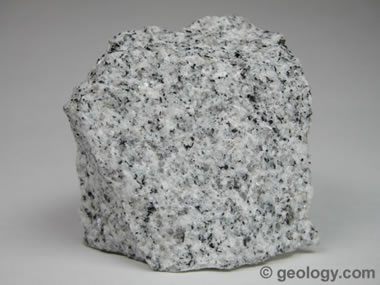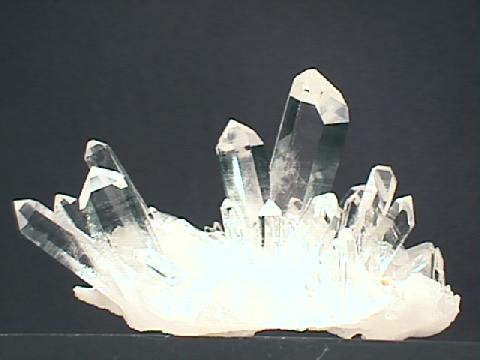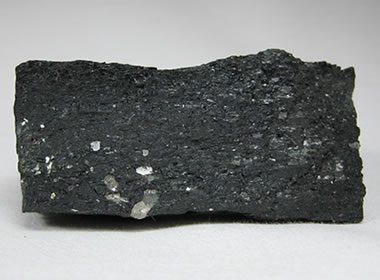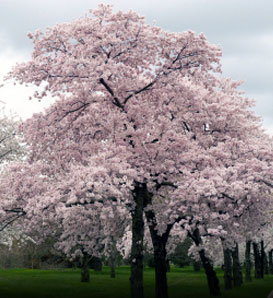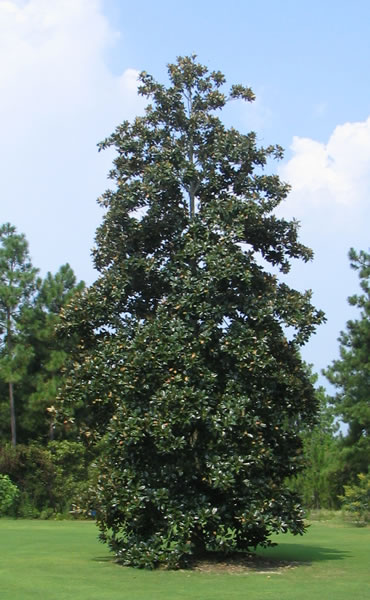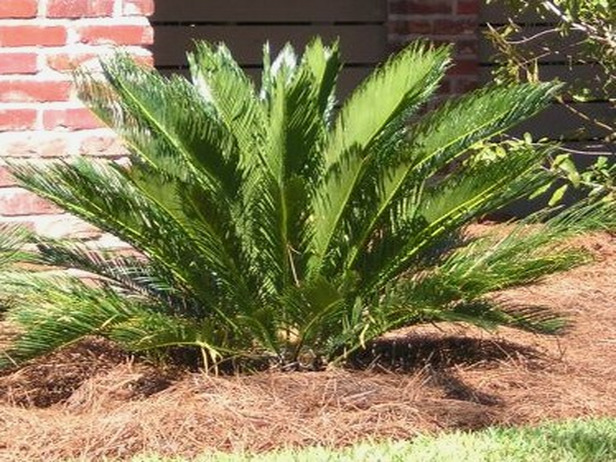This lab took place at the Ocmulgee National Monument (Ocmulgee Indian Mounds). While there, the class studied various types of soil and levels of decay and decaying matter in the woods. The class was also able to study the Indian Mounds.
ENB 150
Friday, December 7, 2012
Blog #4 -- Minerals and Rocks
Granite
Granite is a light colored igneous rock with grains large enough to be visible with the unaided eye. it forms from the slow crystallization of magma below Earth's surface. Granite is composed mainly of quartz and feldspar with minor amounts of micas, amphiboles and other minerals. This mineral composition usually gices granite a red, pink, gray, or white color with dark mineral grain visible throughout the rock.
Gneiss
Gneiss is a rock type that is very widespread in the continental crust, and can also be found commonly on certain surface locations. As with granite, most of the grains are visible from the naked eye. banding in gneiss is a result of mineral segregation into seperate, typically light- and dark-colored layers.
Coquina
Coquina is a sedentery rock that is composed either wholly or almost entirely of the transported, abraded, and mechanically sorted fragments of the shells of either molluscs, trilobites, brachiopods, or other invertebrates. The average size of the composing particles is 2 mm or greater. Coquina can vary in hardness from poorly to moderately cemented.
Quartz
Quartz is the most common mineral on the face of the earth. it is found in nearly every geological environment and is at least a component of almost every rock type. Frequently, it is the primary mineral. It is also the most varied in terms of variety, colors, and forms. This is a result of quartz being so widespread.
Feldspar
A group of rock in which nearly 20 members are recognized; only 9 of these members being well known or common. Those 9 members make up the greatest percentage of minerals found in earth's crust. These rocks are fairly low in symmetry and tend to twin easily. They tend to be blocky and fairly dull.
Hornblende
Hornblende is a complex inosilicate series of minerals. It is not a recognized mineral in its own right, but the name used as a general or field term to reefer to a dark amphibole. It is an isomorphus mixture of three molecules; a calcium-iron-magnesium silicate, an aluminum-iron-magnesium silicate, and an iron-magnesium silicate.
Mica
This group includes several closely related materials having close to perfect basal cleavage. All are monoclinic and all are similar in chemical composition. Their nearly perfect cleavage is explained by the hexagonal sheet-like arrangement of its atoms.
Topaz
Topaz is an aluminum, hydroxy-flourine silicate. Strong chemical bonding makes it the hardest of the silicate minerals. It is most commonly colorless; however it does have many varieties of colors.
Tuesday, October 9, 2012
Campus Vegetation Lab
For This lab, the class walked around the campus identifying different types of trees, shrubbery, and flowers. In today's blog I will identify 3 of each trees, shrubs, and flowers that were identified on campus.
We will begin with tree...
1) Yoshino Cherry Tree
The tree that made the Macon Cherry Blossom Festival famous. Fragrant, white-pink flowers; oriental branching pattern; glossy bark; dark-green leaves. Likes full sun, well-drained soil. Grows to 40' to 50'. (zones 5-8)
2) Magnolia GrandiFlora
Native to the Southeastern United States the Southern Magnolia is an evergreen with large dark green leaves and white fragrant flowers. It will grow to 90 feet and the flowers can be 12 inches across. Recommended for the Upper, Middle, Lower, and Coastal South
3) Dogwood
The tree of Georgia in full bloom
Next, the shrubs...
1) Loropetalum myrtle
2) Itea
3) Sago Palm
Finally, the Flowers
1) Day Lily
These perennials have fleshy roots topped with clumps of curving, sword-shaped leaves that can grow up to two feet long. After the foliage develops, the tall, straight, branched stalks appear, bearing numerous flower buds. The flowers on a single stalk open a few at a time for a period of several weeks.
2) Marigold
can be tall plants, growing up to 36 inches high, though breeding has produced shorter heights. They have large, fully double flowers in yellow, gold, and orange.
3) Snap Dragon
Snapdragon flowers have a unique, irregular shape and come in shades of yellow, red, pink, orange, bronze, lavender and white.
Ocmulgee River Lab
ENB Lab 09/18/2012
For this lab the class took a trip to the Ocmulgee River entrance off of Spring Street. We visited the river in order to observe the river and the different minerals and organisms in it. Also, we determined the flow rate of various channels of the river, as well as used specific tools to measure the varying depths of the river. I feel like this was a good experience for the class, as it introduced everyone to a certain hands on approach to environmental science in a fun and relaxed atmosphere.
1) The first activity that we were supposed to take part in was measuring the depth and elevation differences of the river.Unfortunately, the tools needed to carry out and complete this activity were not currently at hand so we had to move on to the next activity. However, if we were to measure the elevation differences in the river we would do this by using: a pair of PCB pipes with intermittent markings on them every foot or so, a string tied around each of the PCB pipes, and a Line Level attached to the center of the string. We would begin by putting one PCB Pipe in one location on the river and the other in a different location of different elevation.Then, we would adjust the line holding the two poles together until the higher end was touching the water and the end on the other pole was in a position so as to make the line level show "level." Finally, we would subtract the difference in the feet from the poles to find the difference of elevation.
2) The second planned activity for this lab was measuring the relative amount of clams in the river. Fortunately, for this part of the lab, we had the necessary equipment. We had a number of different pan sifters with varying levels of screen finery in order to sift through different minerals and such at the river. For the clams however we used a crate sifter since clams are much larger than other things we were observing. The procedure for this was to shovel and/or scoop sand from the river into the crate and shake/sift until we found clams. then we were to count them and record the number of clams and the location of the clams relative to the river and its given elevation at that point.
3) The third and final activity that we participated in was determining the flow rate of the river at 3 different channels. To determine this, we used a buoyant object that was capable of floating with the current. We then stationed people a measured distance apart and timed how long it took the object to get from Point A to Point B.
For this lab the class took a trip to the Ocmulgee River entrance off of Spring Street. We visited the river in order to observe the river and the different minerals and organisms in it. Also, we determined the flow rate of various channels of the river, as well as used specific tools to measure the varying depths of the river. I feel like this was a good experience for the class, as it introduced everyone to a certain hands on approach to environmental science in a fun and relaxed atmosphere.
1) The first activity that we were supposed to take part in was measuring the depth and elevation differences of the river.Unfortunately, the tools needed to carry out and complete this activity were not currently at hand so we had to move on to the next activity. However, if we were to measure the elevation differences in the river we would do this by using: a pair of PCB pipes with intermittent markings on them every foot or so, a string tied around each of the PCB pipes, and a Line Level attached to the center of the string. We would begin by putting one PCB Pipe in one location on the river and the other in a different location of different elevation.Then, we would adjust the line holding the two poles together until the higher end was touching the water and the end on the other pole was in a position so as to make the line level show "level." Finally, we would subtract the difference in the feet from the poles to find the difference of elevation.
2) The second planned activity for this lab was measuring the relative amount of clams in the river. Fortunately, for this part of the lab, we had the necessary equipment. We had a number of different pan sifters with varying levels of screen finery in order to sift through different minerals and such at the river. For the clams however we used a crate sifter since clams are much larger than other things we were observing. The procedure for this was to shovel and/or scoop sand from the river into the crate and shake/sift until we found clams. then we were to count them and record the number of clams and the location of the clams relative to the river and its given elevation at that point.
3) The third and final activity that we participated in was determining the flow rate of the river at 3 different channels. To determine this, we used a buoyant object that was capable of floating with the current. We then stationed people a measured distance apart and timed how long it took the object to get from Point A to Point B.
 |
| Ocmulgee River Activities |
Subscribe to:
Posts (Atom)






